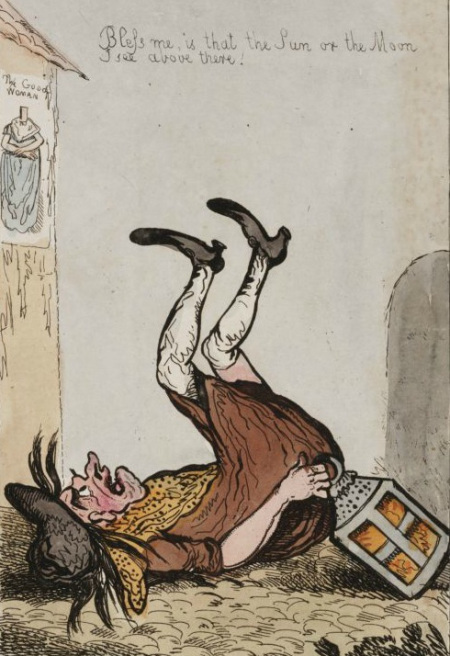Ah, the bench! Lovely and comfy it is, compared to travelling the A14 at some ungodly hour like 9am. I'll just post these, then I'll go and make myself a fry-up for breakfast 
Happy invoicing!

- Live London Bus Map - Matthew Somerville of mySociety produces yet another mashup of open data, combining OpenStreetMap with TfL's live bus location feed.
- Decyphering the Business Card Raytracer - "I recently came across Paul Heckbert's business card raytracer. For those that have never heard of it: It is a very famous challenge in the Computer Graphics field that started on May 4th, 1984 via a post on comp.graphics by Paul Heckbert ( More about this in his article "A Minimal Ray Tracer" from the book Graphics Gems IV). The goal was to produce the source code for a raytracer...that would fit on the back of a business card." Fabien Senglard offers a detailed analysis of Andrew Kensler's solution, which is:
Code:#include <stdlib.h> // card > aek.ppm #include <stdio.h> #include <math.h> typedef int i;typedef float f;struct v{ f x,y,z;v operator+(v r){return v(x+r.x ,y+r.y,z+r.z);}v operator*(f r){return v(x*r,y*r,z*r);}f operator%(v r){return x*r.x+y*r.y+z*r.z;}v(){}v operator^(v r ){return v(y*r.z-z*r.y,z*r.x-x*r.z,x*r. y-y*r.x);}v(f a,f b,f c){x=a;y=b;z=c;}v operator!(){return*this*(1/sqrt(*this%* this));}};i G[]={247570,280596,280600, 249748,18578,18577,231184,16,16};f R(){ return(f)rand()/RAND_MAX;}i T(v o,v d,f &t,v&n){t=1e9;i m=0;f p=-o.z/d.z;if(.01 <p)t=p,n=v(0,0,1),m=1;for(i k=19;k--;) for(i j=9;j--;)if(G[j]&1<<k){v p=o+v(-k ,0,-j-4);f b=p%d,c=p%p-1,q=b*b-c;if(q>0 ){f s=-b-sqrt(q);if(s<t&&s>.01)t=s,n=!( p+d*t),m=2;}}return m;}v S(v o,v d){f t ;v n;i m=T(o,d,t,n);if(!m)return v(.7, .6,1)*pow(1-d.z,4);v h=o+d*t,l=!(v(9+R( ),9+R(),16)+h*-1),r=d+n*(n%d*-2);f b=l% n;if(b<0||T(h,l,t,n))b=0;f p=pow(l%r*(b >0),99);if(m&1){h=h*.2;return((i)(ceil( h.x)+ceil(h.y))&1?v(3,1,1):v(3,3,3))*(b *.2+.1);}return v(p,p,p)+S(h,r)*.5;}i main(){printf("P6 512 512 255 ");v g=!v (-6,-16,0),a=!(v(0,0,1)^g)*.002,b=!(g^a )*.002,c=(a+b)*-256+g;for(i y=512;y--;) for(i x=512;x--;){v p(13,13,13);for(i r =64;r--;){v t=a*(R()-.5)*99+b*(R()-.5)* 99;p=S(v(17,16,8)+t,!(t*-1+(a*(R()+x)+b *(y+R())+c)*16))*3.5+p;}printf("%c%c%c" ,(i)p.x,(i)p.y,(i)p.z);}} - D.W. Griffith’s The Mended Lute – Academic Audio Commentary - "The American Studies and History Podcast presents an academic audio commentary on D.W. Griffith’s 1909 film, The Mended Lute. The video below contains the entire 8 minute original film with a new audio commentary track exploring the racist attitudes which sit at the heart of this production."
- Lanyrd: from idea to exit - the story of our startup - Natalie Downe and Simon Willison started Lanyrd when they came down with food poisoning in Morocco on their honeymoon, soon raised over $1 million in funding, and have just been acquired by Eventbrite. This is "...the story of Lanyrd from a two-week proof of concept to a fully-fledged startup, the lessons learned along the way about building and launching a product, running a company, raising investment and the entrepreneurship journey. This is the talk she wished she heard before getting started!"
- Survivorship Bias - "The Misconception: You should focus on the successful if you wish to become successful. The Truth: When failure becomes invisible, the difference between failure and success may also become invisible." David McRaney draws on examples from, among other places, the USA's Statistical Research Group, which achieved important mathematical breakthroughs in support of the war effort in WWII.
- Hyperlapse Tutorial - How-to from start to finish - Video tutorial from Morten Rustad, explaining how to make those cool hypertimelapses with minimal equipment.
- Isaac Newton: 17th-Century London’s Dirty Harry - "The science titan wasn’t used to being outsmarted. But after two years of trying to shut down English counterfeiting, one underworld kingpin was still getting the better of him." Turns out Newton wasn't above a few dirty tricks when it came to prosecuting a notorious counterfeiter.
- Super-ellipse Calculator & Plotter - "The general Cartesian notation of the form comes from the French mathematician Gabriel Lamé (1795–1870) who generalized the equation for the ellipse (Lamé curve). Piet Hein used the Lamé curve in many designs. He used n=2.5 found by trial and error and names it the superellipse. Using e (~ 2,718) as n is by many considered to be a better and more harmonic visual choice. As e is the base of the natural logarithm the result is often referred to as the natural superellipse. A generalization of the superellipse formula was first proposed by Johan Gielis. It is known as the Superformula." And now you can play with them in your browser

- What the Man Who Invented the Rolling Stones Can Teach You About Branding - "Andrew Loog Oldham, the manager and producer of the Rolling Stones from 1963 until 1967, still considers his work in branding the world's greatest rock band—he essentially built their image from the ground up—to be all but unsurpassed." Short interview revealing some of the simple but effective techniques Oldham used to build the image of the Stones.
- Why drunk women don’t make good sweethearts, 1795 - "Inebriated women clearly do not make the most delicate wives and sweethearts. This satire on drunkenness in the fairer sex, published in 1795, depicts eight ladies young and old drinking gin, falling over, vomiting and walking into things (also featuring the occasional disgruntled gent)." Quite similar to a CUK meetup, then


Happy invoicing!









Comment